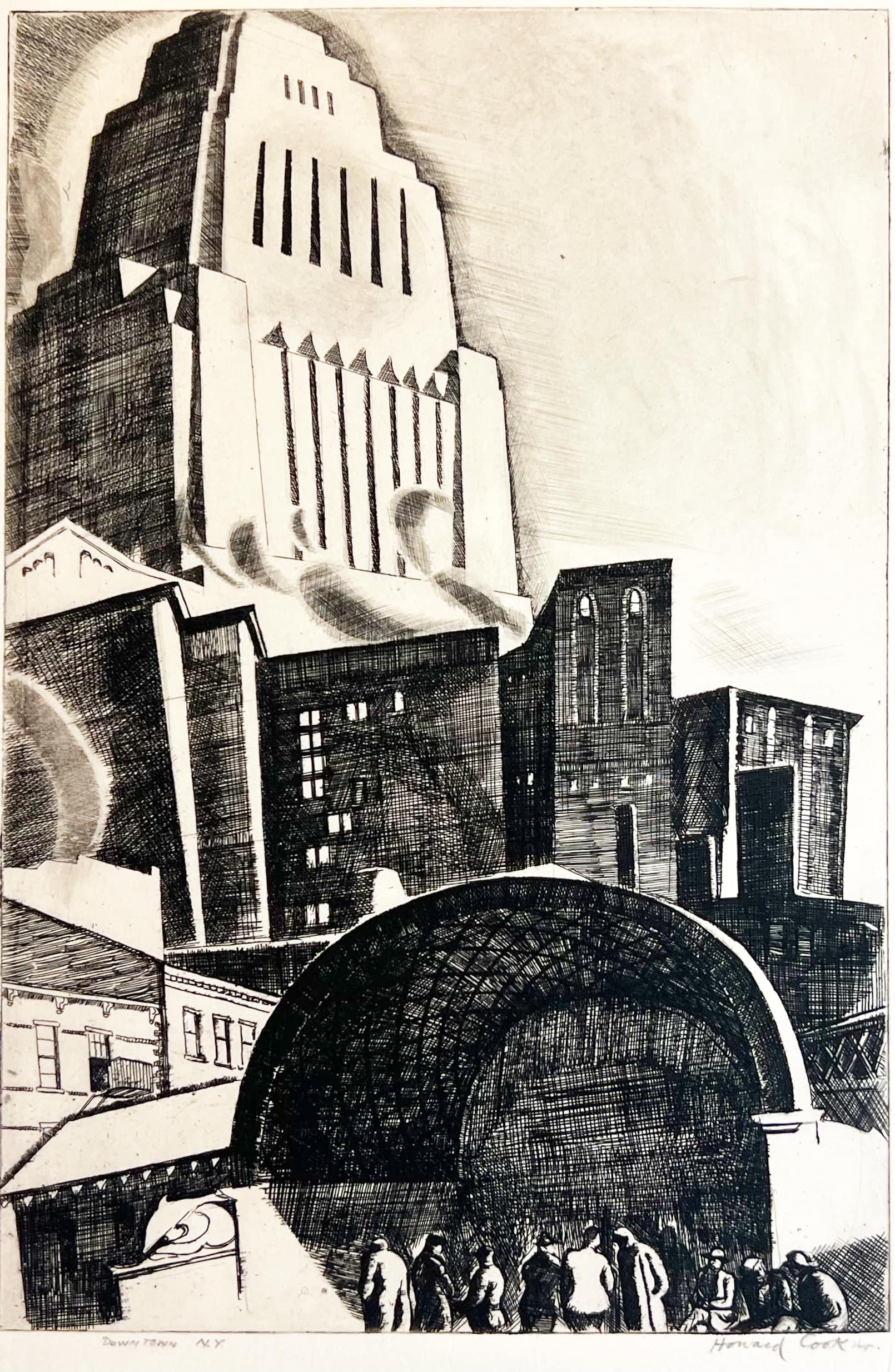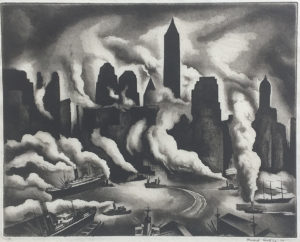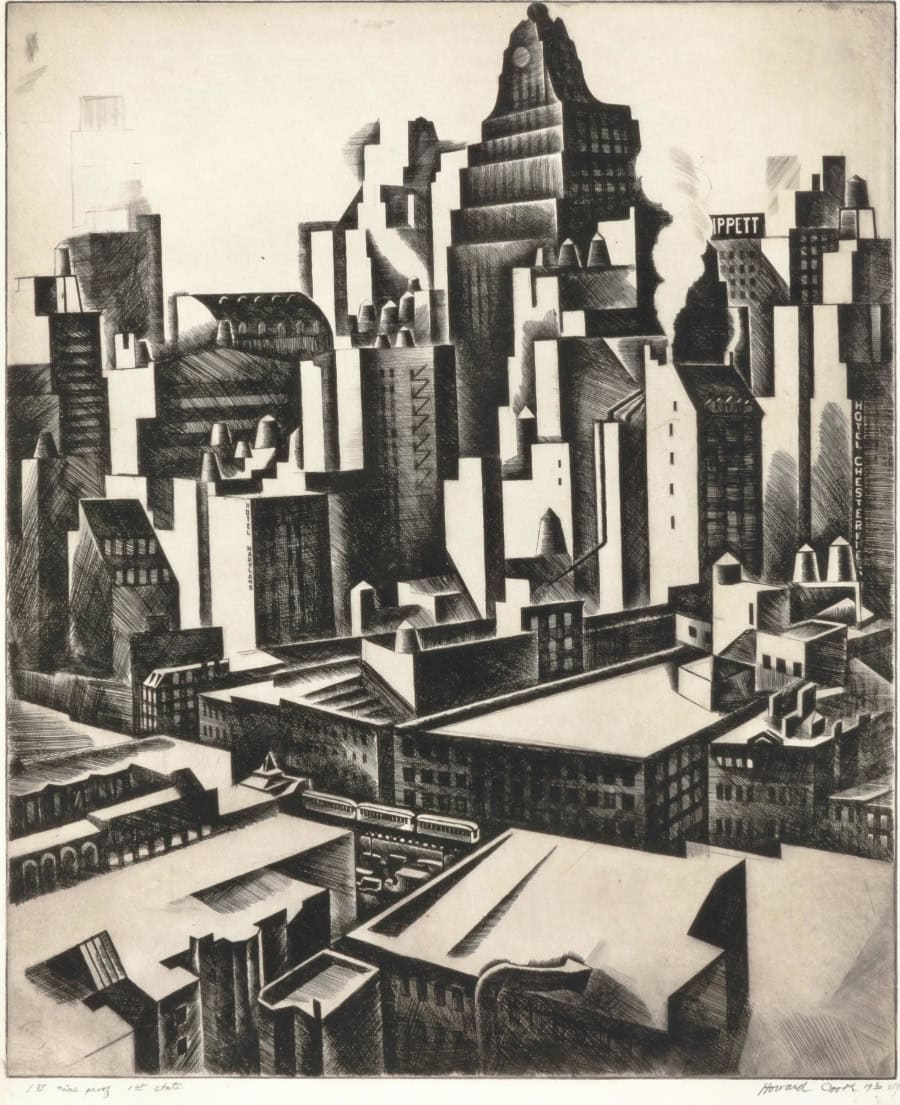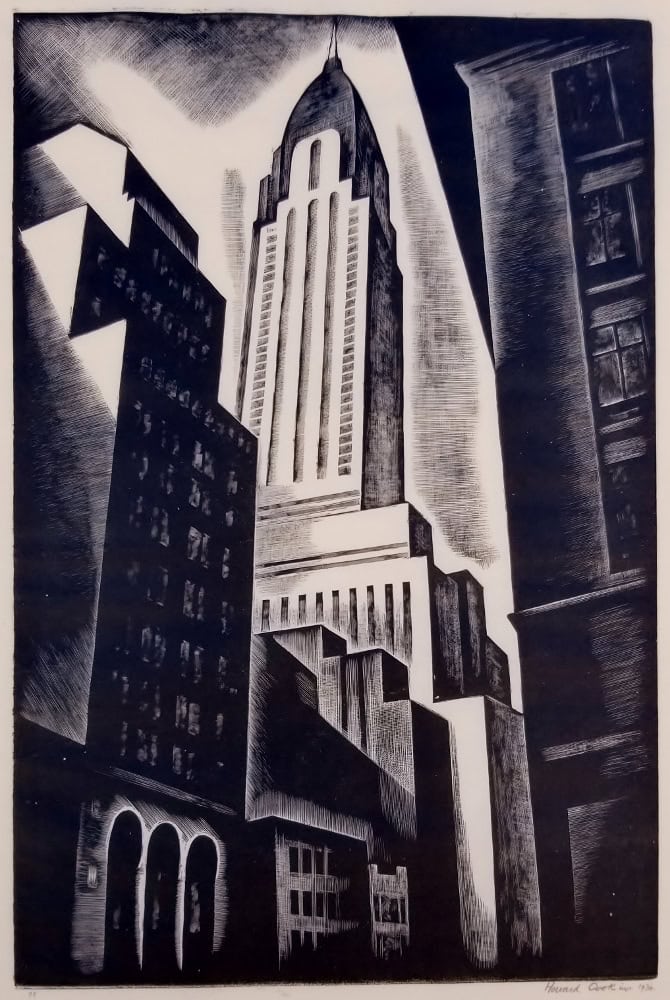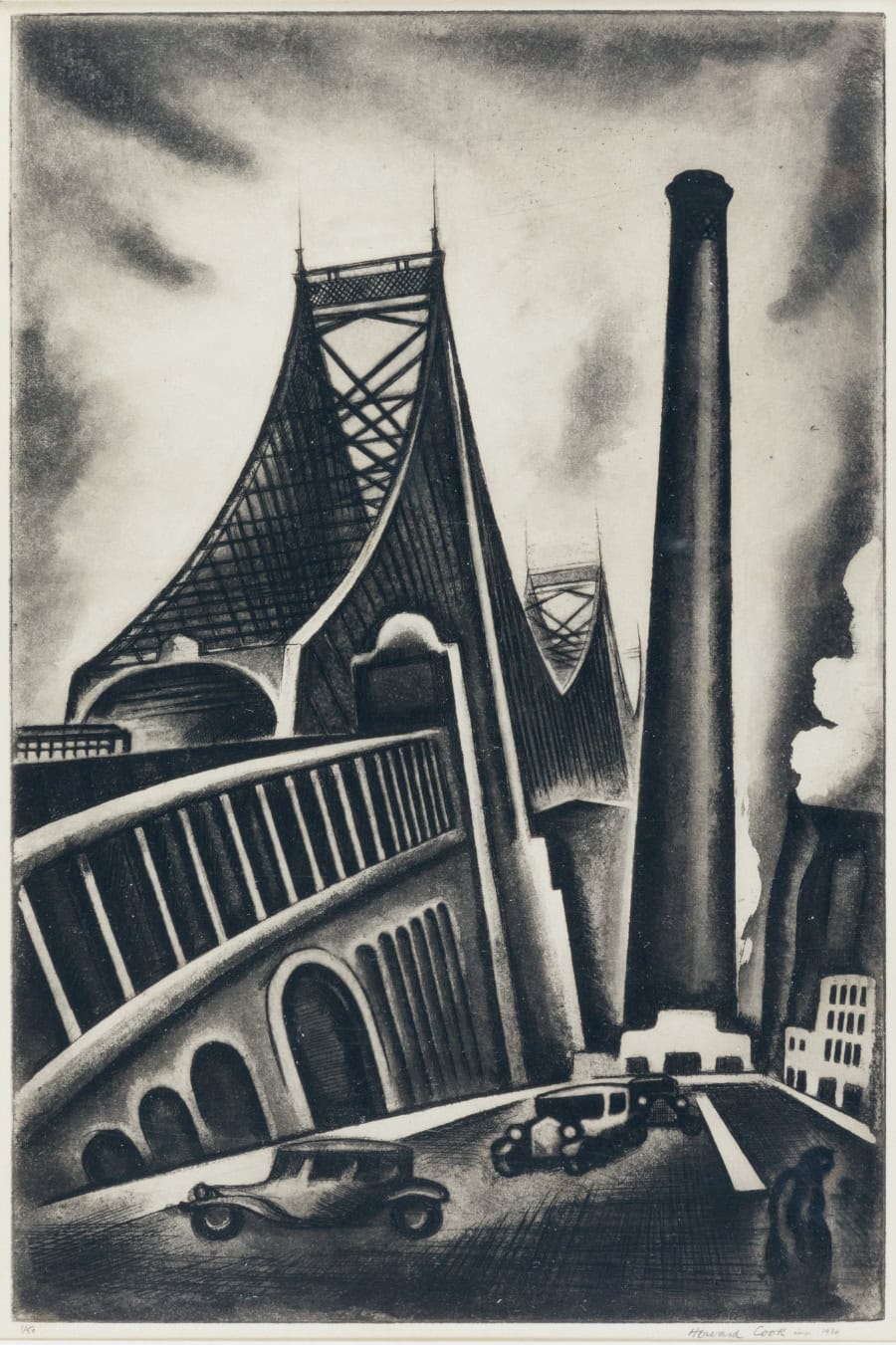COOK, Howard
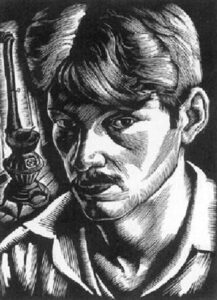
Howard Norton Cook (1901–1980) is best known for his prints in a variety of media and his murals.
Born in Springfield, Massachusetts, he headed for New York City in 1919 to attend the Art Students League, where he studied for two years with Max Weber and Andrew Dasburg. In 1922 he began to work as an illustrator creating woodcuts and drawings for magazines such as Harper’s, Scribner’s, Atlantic Monthly, Forum and Survey. His travel for these assignments took him to many places including his first visit to Europe.
Upon his return he began studies at the Art Students League with Joseph Pennell. It was during this time that he became interested in printmaking, primarily etching, but learning woodcutting as well.
Cook first came to Taos, New Mexico in 1926, where he was introduced to the artist Barbara Latham. The couple married in 1927. From 1928 to 1935, they traveled to Europe, Mexico and the American South. Cook worked under the WPA producing murals for courthouses in Pittsburgh and Springfield, Massachusetts. He also produced a fresco, The Importance of San Antonio in Texas History, in a San Antonio post office in 1937. In 1938, the couple settled near Taos on the Talpa ridge. This became their base until 1976. During World War II, Cook was an artist for the US Navy. In 1943 he was appointed Leader of a War Art Unit and served in the Solomon Islands in the Asiatic-Pacific Theater.


